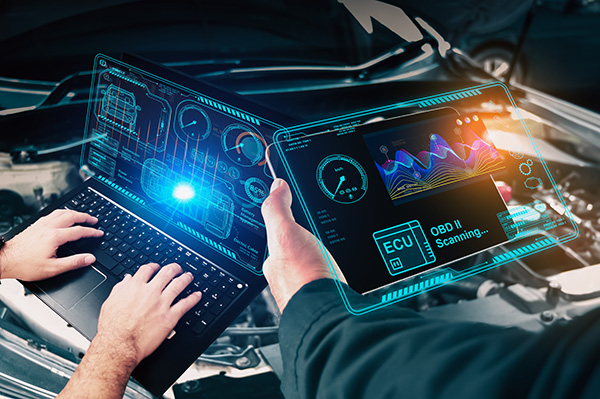
Modern vehicles are marvels of engineering, packed with sophisticated technology designed to enhance performance, safety, and efficiency. But what happens when things go wrong? Enter the world of computer diagnostics—a cutting-edge tool that has revolutionized how we identify and solve mechanical issues in cars. We'll share how computer diagnostics work, their benefits, and why they're essential for maintaining your vehicle's health.
The Basics of Computer Diagnostics
Computer diagnostics, often referred to as OBD (On-Board Diagnostics), is a system that allows technicians to interface with your car's computer system. When you take your car in for a check-up, a technician plugs a diagnostic scanner into your vehicle's OBD port, usually located under the dashboard. This scanner reads error codes and data from various sensors and modules in your car, providing valuable information about its health and performance.
The Role of Sensors and Error Codes
Your car has numerous sensors that monitor everything from engine temperature to exhaust emissions. These sensors send error codes to the car's computer system when something goes wrong. The diagnostic scanner retrieves these codes, translating them into actionable information for the mechanic. For example, a code might indicate a misfire in one of the cylinders, an issue with the oxygen sensor, or a problem with the transmission.
Benefits of Computer Diagnostics
Computer diagnostics offer several advantages over traditional troubleshooting methods:
- Accuracy and Efficiency: Diagnostics provide precise information, allowing mechanics to pinpoint issues quickly. This reduces the time spent on guesswork and trial-and-error, leading to faster repairs.
- Comprehensive Analysis: Modern diagnostic tools can check multiple systems simultaneously, giving a complete overview of the car's health. This means potential issues can be identified and addressed before they become major problems.
- Cost-Effective: Early problem detection can save money by preventing more serious and expensive repairs. Additionally, diagnostics help avoid unnecessary part replacements.
- Enhanced Performance: Regular diagnostic checks ensure your car runs efficiently. Maintaining optimal performance can improve fuel economy and provide a smoother driving experience.
How Technicians Use Diagnostic Data
Once the diagnostic scanner retrieves the error codes, technicians analyze the data to determine the root cause of the problem. For instance, if the scanner indicates an issue with the fuel injector, the technician will inspect the injector, fuel lines, and related components. They might also perform additional tests to confirm the diagnosis. This methodical approach ensures that repairs are targeted and effective, minimizing downtime and inconvenience for the car owner.
Real-World Examples of Computer Diagnostics in Action
To illustrate the power of computer diagnostics, let's look at a few real-world scenarios:
- Check Engine Light: When the check engine light comes on, it could be due to a variety of issues. A diagnostic scan reveals the specific error code, such as a malfunctioning catalytic converter or a faulty spark plug. This directs the mechanic to the exact issue, allowing for a quick and accurate fix.
- Transmission Problems: If your car is experiencing transmission issues, a diagnostic scan can pinpoint the exact cause. For example, it might reveal problems with the transmission fluid pressure, solenoid faults, or gear ratio errors. This enables the technician to address the specific component causing the trouble, rather than replacing the entire transmission, which saves both time and money.
- Electrical Issues: Modern cars rely heavily on electrical systems, from the battery and alternator to complex wiring and control modules. Computer diagnostics can identify faults in these systems, such as a weak battery, a failing alternator, or a short circuit in the wiring. This ensures that electrical problems are fixed before they lead to more serious issues like a complete vehicle shutdown.
The Evolution of Car Diagnostics
Car diagnostics have come a long way from the early days of simple mechanical tools and visual inspections. The evolution began with the introduction of the first on-board diagnostic systems in the 1980s, which allowed basic monitoring of engine performance and emissions. Over the years, these systems have become more sophisticated, incorporating advanced computer technology and software.
Today's diagnostic tools are highly advanced and capable of interfacing with multiple car systems, including the engine, transmission, brakes, and even the infotainment system. This evolution has made diagnostics more accurate and comprehensive, enabling mechanics to provide better and faster customer service.
Don’t let small issues turn into big problems. Visit Inmon Automotive for a professional diagnostic scan and expert repair. Schedule your service now and drive worry-free!